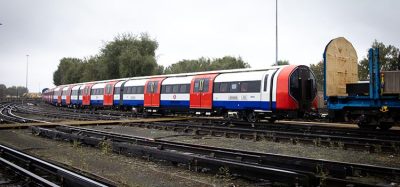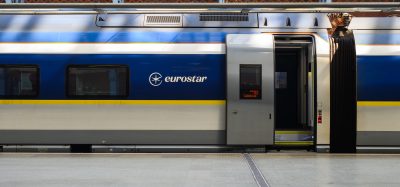Target Network 2025+: Austria’s rail development master plan
Posted: 21 June 2017 | Christian Holzer, Viktor Plank (ÖBB) | No comments yet
Viktor Plank and Christian Holzer from the Asset Management and Strategic Planning Department of ÖBB-Infrastruktur AG provide details of the status quo and latest developments to the Austrian railway’s ‘Target Network 2025+’ master plan.
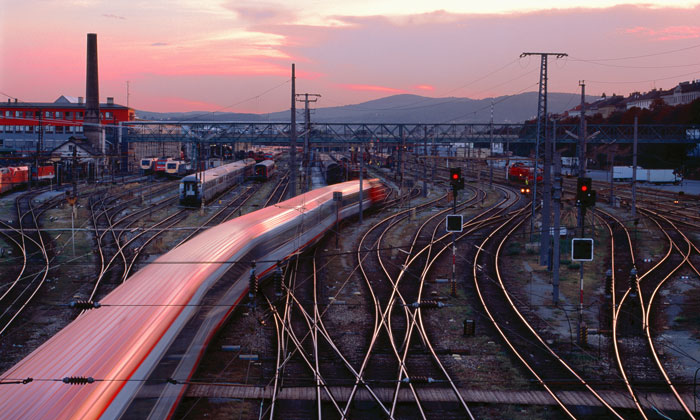

Copyright: ÖBB
Target Network 2025+1 is a master plan for a long-term, sustainable safeguarding and development of the railway in Austria. It was developed by ÖBB-Infrastruktur AG in close cooperation with the Federal Ministry of Transport, Innovation and Technology (BMVIT) and the Ministry of Finance together with external transport planners.
Target Network 2025+ is based on the BMVIT’s traffic master plan for Austria; the BMVIT’s guiding strategy concerning the design of railway infrastructure as well as various European provisions. The BMVIT’s traffic forecast ‘Austria 2025+’ is another significant input parameter. As a result of its legally binding nature, the Target Network 2025+ represents a stable planning basis.
The programme of measures described and assessed in the target network contributes toward the achievement of the following main goals:
- Establishing the preconditions for the step-by-step introduction of an integrated timetable concept in passenger transport (see Figure 1)
- Support the shift of freight transport to the railway with the aim of achieving an increased modal split
- Building capacities for a transport shift and the resultant reduction of traffic-related CO2 emissions that are necessary due to climate policy.
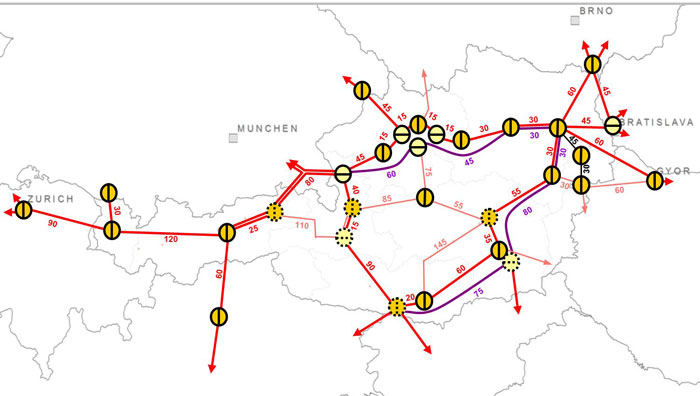

Node Link Model / Copyright ÖBB
Target Network 2025+ not only foresees the expansion and new construction of lines, but also the disposal or closure of regional lines that are used below capacity and without potential. Clear criteria were defined regarding the point at which a route can be operated in an efficient way.
Target Network 2025+ is implemented step-by-step via the network development plan of ÖBB-Infrastruktur AG as well as by individual route development plans. As a result of this strategic process, an ongoing implementation of higher level goals is ensured by means of individual measures derived from these targets.
The premise to stay with the concept of mixed traffic (i.e. high-speed, local and freight transport on one infrastructure) in the Austrian network is also essential for the success of Target Network 2025+. Furthermore, the main axes of the Austrian network are located on TEN-T Corridors, meaning that an expansion of the infrastructure takes into account European harmonised standards in any event.
What’s already happened?
From a line construction point-of-view – in particular with regards to the integrated timetable concepts and providing the necessary capacities – the 4-track upgrade between Vienna and Linz, which is almost complete, should be highlighted. Here the newly constructed route between Vienna and St. Pölten, together with the Lainzer Tunnel through the city of Vienna with a travel time of approximately 25 minutes, acts as a core element. In addition, the new construction of the Klederinger loop created a direct long-distance transport connection from the main station in Vienna to Vienna Airport.
The launch of new or modernised large train stations are an essential measure, particularly with regard to our customers. In addition to the train stations in Graz and Salzburg, the Vienna Main (fully operational since 2015) plays a key role. The station is not only an attractive access point to the railway for the passengers, but also an international connection point for all significant routes (West, South, North and Eastern axis) in Austria.
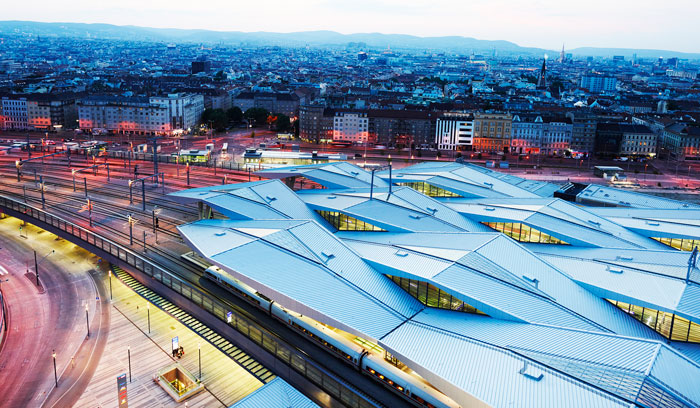

Vienna Main Station / Copyright: ÖBB
In addition, there is an extensive modernisation campaign for smaller and medium train stations. Hereby the preconditions for efficient operational management (integration into the train control centre) are created. Moreover, ÖBB-Infrastruktur AG aims to provide barrier-free accessibility for 90 per cent of all travellers by 2025 (currently 75 per cent).
ÖBB-Infrastruktur AG is in the process of creating approximately 2,000 new Park and Ride spaces around Austrian train stations as an interface between the railway and individual transport.
Furthermore, in the freight traffic sector the launch of the Vienna South Terminal in 2016 is considered a significant milestone.
Ongoing projects
Not least owing to the long lead times of big infrastructure projects, many of the planned Target Network 2025+ projects are currently at implementation phase. This mainly refers to big tunnel projects such as the new 130km-long Koralm Line from Graz to Klagenfurt, which includes the 33km-long Koralm Tunnel (planned launch in 2024), the 27km-long Semmering Base Tunnel (planned launch in 2026), and the 64km-long Brenner Base tunnel (planned launch in 2026).
With the planned start of service of the Pottendorfer line between Vienna Meidling and Wiener Neustadt in 2023, four tracks will be operational in this section of the Southern railway line. The Northern railway line, as a long-distance traffic connection to Prague, will be upgraded for train speeds up to 160km/h from Vienna Süßenbrunn to the state border by 2026. The connection from Vienna to Bratislava via Stadlau and Marchegg will be fully electrified by 2022 and upgraded for 160km/h speeds (including section-wise two tracks). The bypass of St. Pölten for freight transport will become operational later in 2017.
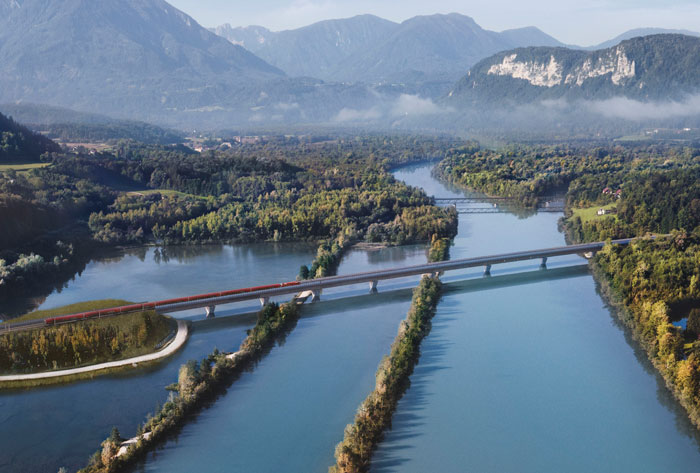

A view of the section of the Koralm Line / Copyright: ÖBB
The challenges
The period from the initial project idea, via preliminary and implementation planning to the construction and launch of projects, often lasts several years, and time frames of up to 20 years or more are not uncommon. In addition to the technical, economical and railway-operational parameters, the timetable represents the essential planning basis for the infrastructure expansion works. The idea of a future operating programme is already derived in the very early project phases based on market requirements, traffic and demographic developments and other trends. The stability of framework conditions over such long periods of time can, however, not be expected. The developments in freight transport are closely connected to the economic situation in Austria and Europe. Passenger transport has undergone a significant change, mainly as a result of the liberalisation of the market (in Austria, in particular in long-distance traffic). Furthermore, the expansion plans and developments in the neighbouring countries have been substantiated over recent years.
Resuming the expansion programme carried out in Austria so far shows a trend comparable with many other European countries: Until now optimisation of a country’s own network was the main focus with expansion to neighbouring countries being neglected. However, the inclusion of national railway infrastructure into a coordinated and high-performance European network constitutes the long-term basis for the development
of the system railway.
An update of the Target Network 2025+ will therefore be implemented in the near future.
The future
The expansion of railway infrastructure is subject to permanent discussions around the topic of sustainability. Not only in the sense of the efficient establishment and use of the assets, but also with regard to the question of whether the railway system will be out of date in a few years from a technical point-of-view. This is a valid question, particularly in respect of the long life of various assets (for example, tunnels >100 years). Of course, ÖBB follow and analyse all developments regarding the subject of mobility; mega trends such as autonomous driving, car-sharing, e-Mobility and initiatives such as the hyperloop are critically compared to ÖBB-Infrastruktur AG’s strategic orientations. ÖBB-Infrastruktur AG are nevertheless convinced that the railway will continue to play a significant role in meeting people’s mobility requirements over the coming decades. Considering such developments as urbanisation, the demand for higher travel speeds, and sensitisation to environmental topics, there is no alternative at this point in time that sufficiently rivals the railway’s role as the backbone of mass transport for local and mid-distance transport. For this reason, ÖBB-Infrastruktur AG is able to continue using the Target Network 2025+ master plan as a basis for the future expansion of railway infrastructure in Austria.
We are aware of the responsibility to design the railway for future generations. In this respect we want to continue fulfilling our vision to get as many people as possible excited about railway travel!
Reference:


Viktor Plank started his career with the coordination of design processes of infrastructure projects in 2009. He also represented his company in European harmonisation boards and worked in the Strategic Department of ÖBB-Holding. After his position as Project Manager of Breitspur Planungsgesellschaft he joined the Asset Management Department in 2015 and is currently Master Planner.


Stay Connected with Global Railway Review — Subscribe for Free!
Get exclusive access to the latest rail industry insights from Global Railway Review — all tailored to your interests.
✅ Expert-Led Webinars – Gain insights from global industry leaders
✅ Weekly News & Reports – Rail project updates, thought leadership, and exclusive interviews
✅ Partner Innovations – Discover cutting-edge rail technologies
✅ Print/Digital Magazine – Enjoy two in-depth issues per year, packed with expert content
Choose the updates that matter most to you. Sign up now to stay informed, inspired, and connected — all for free!
Thank you for being part of our community. Let’s keep shaping the future of rail together!
Issue
Related topics
Funding & Finance, Infrastructure Developments, Route Development



